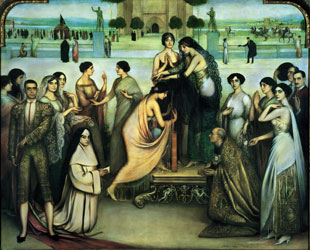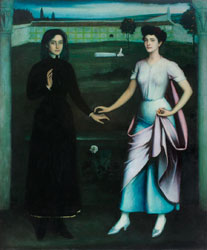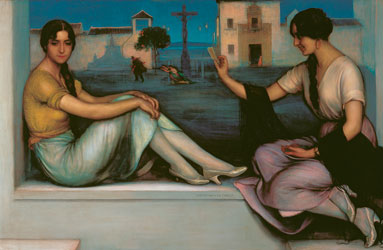- 01. Luminism and Social Realism
- 02. Portraits and Symbols
- 03. Poems and Allegories
- 04. Eroticism and Sensuality
Julio Romero de Torres.
Between Myth and Tradition
27 April - 8 September 2013
The Consecration of the Couplet
1911-1912 Oil and tempera on canvas,230 x 290 cm Colección Junta de Andalucía -
Museo de Bellas Artes de Córdoba

Excmo. Ayuntamiento de Córdoba

Poems and Allegories
Another aspect that is powerfully present in the paintings of Julio Romero de Torres is the use of an underlying allegorical meaning in many of his images – with woman still the recurring subject and symbol of his painting – in order to pay tribute to all the themes that interested him, such as death, love, the world of bullfighting and flamenco, among others.
He cultivated this type of painting throughout his career in works that repeat a scheme inherited from the Italian Renaissance. Built from planes, they consist of a main scene – sometimes narrated before a repertoire of secondary figures – and behind it a background featuring urban spaces of Cordoba.
The figures, mostly female, are often accompanied by elements that are repeated, such as water, packs of cards, fruit and household copperware, always imbued with allegorical meanings. The repetitions found in paintings of this kind – generally large works – hold a particular significance for the painter, who makes them a hallmark.


